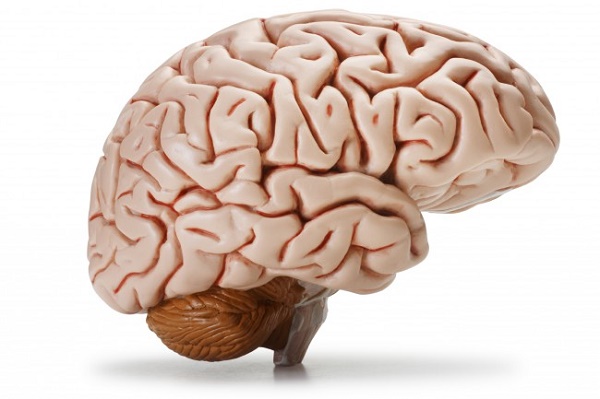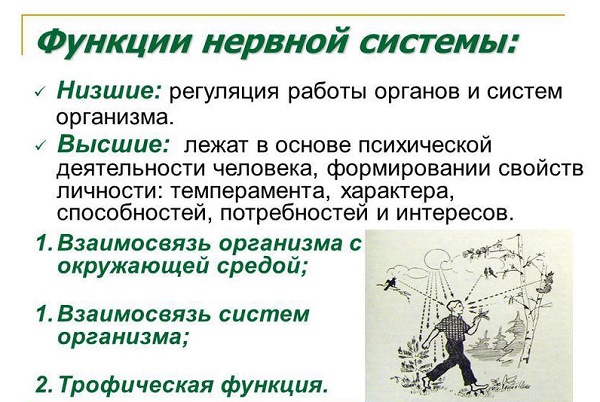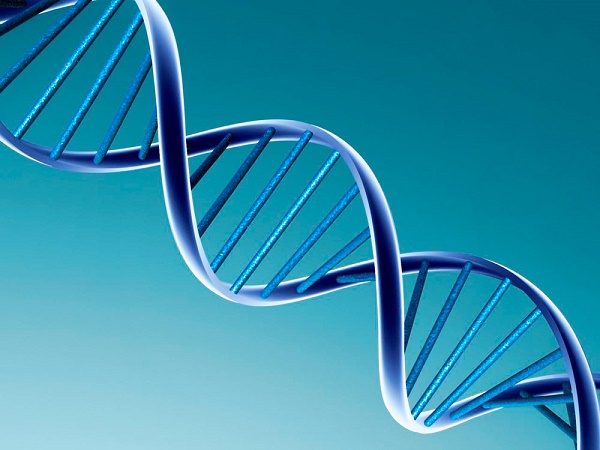Anatomy and function of the central nervous system
Each cell, system and internal organ is a single whole, in order to ensure the interaction and well-coordinated work of all organs, a central nervous system is needed. This element of the body is presented in the form of structural and functional units and branches branching from them of various lengths and purposes.
The central nervous system is formed of several components - the brain and spinal cord, interacting through the peripheral nervous system. The human central nervous system is responsible for the following feelings and sensations:
- organs of hearing and vision, perception of sounds and light, response to external pathogens;
- sense of smell and touch, with the help of which the external world and the environment are perceived;
- emotionality, sensitivity;
- memory and thought processes of the body, intellectual activity.
The structure of the brain of the central nervous system consists of gray and white matter. The gray substance is represented by nerve cells with small branching processes. This substance occupies the center of the spinal cord, affecting the spinal canal. In the brain, the gray matter is the main component of the cortex, having scattered formations in essence white. The white layer is located under the gray and is structurally formed from fibers involved in the formation of nerve bundles. These bundles of bundles build the nerve.
CNS membranes
Surround the central NS of shells, each of which is different:
- Solid - external. It is this shell that is formed inside the cranial cavity, as well as inside the hollow formation of the spinal column.
- Cobweb cover. This sheath is equipped with nerve endings and blood vessels and is located under the outer sheath.
- Vascular. Between the second and third shells there is another cavity, the space of which is filled with medulla. The choroid, as the name suggests, is formed from a collection of arteries, capillaries, veins, which function as blood vessels. This cover is directly connected to the brain, penetrating into its folds.
Brain
This organ has a simple structure and is represented by the following elements: an extended formation - the trunk, a small brain called the cerebellum, which takes responsibility for muscle tone, coordination and balance, as well as the large hemispheres.

The main element, which includes the higher centers representing reason, mental faculties, speech abilities, is the hemispheres of the brain. Each of them is formed from a nucleus with a gray matter, a white membrane and a cerebral cortex that protects the rest of the layers.
The cerebellum, which provides coordinated actions, is represented by gray matter, a shell of white matter, and a layer of gray from the outside.
The trunk is a part that has no separation by layers, formed from a single array that is not divisible into colors. This part directly commutes with the rest and corrects the work of breathing, circulatory systems, movement and senses.
Spinal cord
This cylindrical organ is located in the depths of the spinal column, has protection in the form of bone tissue formation. The spinal cord itself is located under the membranes.
If you look at the organ in section, you can see a gray matter in the form of a butterfly or in the shape of an H, from above it is covered with a white shell. Some of the pathways originate in white matter and end in gray matter, and vice versa. Many fibers located in the white mass of the membrane organize the interaction of many sections of the gray matter located in the spinal cord.
CNS functionality
The device of any individual is represented by a variety of structures and organs interacting with each other, but all of them are aimed at promoting the normal life of a person's device, his protection, support, nutrition. The interconnection of systems with each other is provided by the central nervous system. It is she who is the regulator of the processes that take place in the body, with her help the direction of work is changed, the pace of functioning is set and the provision of all the conditions necessary for this. 
The central nervous system performs a number of basic functions, without which the body cannot exist:
- Integration. It occurs by combining functions. Integration is subdivided into 3 forms:
- nervous - the union of the departments of the central nervous system. For example, take food that has color and aroma, which is a conditioned reflex stimulus. In the body, various reflexes occur at the sight of food: saliva is secreted, gastric juice is produced. In this particular case, a combination of behavioral, nutritional, and bodily assignments can be observed;
- humoral. It is a combination of various functions based on body fluids together with hormones. For example, various hormones of internal secretions tend to act synchronously, only increasing the action of each other, but there is a variant of sequential production, when one hormone increases the action of another. The process ends with the activation of a number of different functions. So, adrenaline can develop an increase in heart rate, increase blood glucose levels, start ventilation of the lungs, etc.;
- mechanical. This shape is necessary to perform a specific function that ensures the structural integrity of the organ. If any of the organs or parts of the body is injured, then structural changes are formed, which subsequently leads to a malfunction in the work of the whole organism.
- Correlation. It is necessary in order to most effectively form the relationship between systems, internal organs and processes, to bring them together.
- Regulation. Ensuring the work of the entire central nervous system, it is necessary to regulate and monitor the main indicators of the body. The basis of this regulation is reflexes, the formation and organization of processes, self-regulation, thanks to which the body adapts to the constantly changing internal conditions of the surrounding world. It flows in forms, corrective in the course of action, and nutritious. The nerve processes related to the body and excitation have all sorts of effects.
- Coordination. Synchronization and consistency of actions of all parts of one single system. Change of position or posture, various forms of movement, movement in space, adaptability of reactions to what is happening, work activity, physical activity - all these components must be clearly coordinated and directed by the central nervous system.
- Connection with the environment. The central nervous system is a center that forms a connection and transfer of data from the outside world to the organs and systems of the body for subsequent coordinated actions.
- Cognition and adaptation. To adapt to certain circumstances, to choose the right model of behavior in special situations at this moment, to adapt to the activity, this function of the central nervous system is necessary. With the help of this system, a comfortable adaptation to the circumstances surrounding the person is provided.
Possible problems
Damage and failures in the functioning of the central nervous system are not uncommon, and therefore can occur for various reasons:
- genetic predisposition, congenital defects and disorders;
- injury or mechanical damage;
- inflammatory processes;
- viral infections;
- tumor formations, oncology;
- circulatory disorders, vascular pathology, etc.
Often, these pathological changes appear even in the womb, because many negative factors can affect the fetus:
- infectious diseases of a woman during pregnancy, which were not treated or detected at the wrong time;
- injuries, incl. during difficult childbirth;
- radiation exposure;
- toxic effects, intoxication;
- exposure to alcohol or drugs.
Heredity is fraught with the greatest danger, it is especially important to take good care of pregnancy in the first months of pregnancy, because it is during this period that the female body is subject to changes and forms the child's nervous system. The fetus may develop hydrocephalus or microcephalus, which are fraught with dangerous consequences, and will require long and expensive treatment in the future. They can also make a child disabled for life.

The structure of the central nervous system has many complexities and parts responsible for the work. Therefore, any even minor deviations from the norm can serve as an obstacle to the full functioning of the whole organism. That is why it is necessary to listen to your body, recognize its danger signals in a timely manner, and eliminate malfunctions and malfunctions in the work and interaction of individual parts.
It is important to plan the day correctly, correctly distribute the body's resources, and allocate time for proper rest and sleep. An important role is played by the diet, which must be balanced and natural. Breathe fresh air every day and do simple physical exercises that will help keep your body in shape and your body in harmony.

